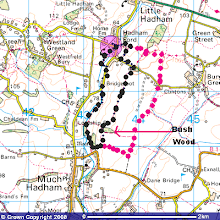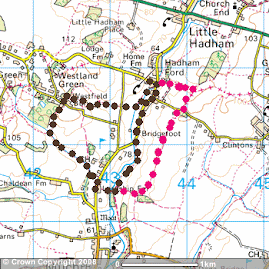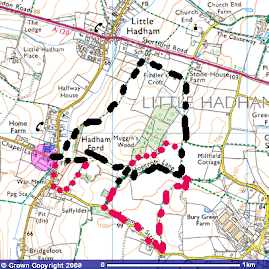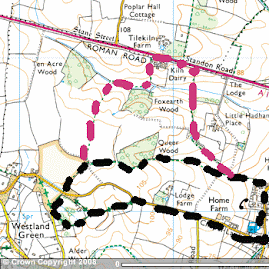I set off at 6.45am for a day at Dungeness. The forecast looked good for migrants working their way up channel but the busy motorways conspired against me and, with a coffee break at Maidstone, it was gone 9 by the time I sat down in the Seawatch Hide. Here, warden David Walker and several others had been busy recording many species all morning as from 6.30. I had missed a huge movement of common scoter (2200+) with 14 Velvet scoter mixed in. Fortunately, a few still trickled by whilst I was in the hide along with gannets, an arctic skua, a great skua but I missed the auks, including 2 puffins and a manx shearwater.
I then headed off to check the Desert and Long Pits as well as The Moat. A wheatear flew by but nothing else of note as the wind turned unfavourably to a north easterly. A final check around the Lighthouse garden gave little so off to the ARC Pit.
 |
| Just testing my panning skills with a new lens. Work in progress! |
 |
| Oystercatcher |
 |
| Tufted duck |
 |
| Male linnet |
At the ARC Pit a whitethroat was in full voice, my first of the year. Buried deep in a huge bramble pile so no photo and likewise, a little further along the track towards the Hanson Hide, a sedge warbler and Cettis warbler called from deep vegetation. On the pit, pochard, tufted duck, coot and other regulars but nothing of note, so back to the car and on to the RSPB Reserve.
Here, I checked the brambles for tree sparrow, but none were seen so into the Visitor's Centre for a coffee before heading off along the trail.
 |
| Common gull |
 |
| Male shoveler |
 |
| Male reed bunting in full voice |
 |
| Magpie braced against the strong breeze |
Little was seen upon the pits, more whitethroats, cettis warbler and reed buntings so I entered the Denge Marsh hide somewhat unexpectant. From this hide very little, great crested grebe, greylag geese and a couple of pochard so I moved on. The trail took me back to the VC and en route a firecrest called from deep in a gorse bush, 4 Peacock butterflies passed by and a single Emperor moth (male)
 |
| Reed bunting (male) on gorse |
 |
| Male whitethroat in bramble |
 |
| Great crested grebe |
 |
| battered Peacock butterfly |
I eventually got back to the car and realised I was hungry. Time for a pork pie et al so off to Lydd shops where I tucked into a good picnic at Denge Marsh Gully. This small area near the shooting range for the MOD can turn up great birds, or none. My complete list for this area is: Black necked grebe, firecrest, raven, robin, stonechat, melodious warbler, bluethroat and redstart. Today, I added a hugely distant Common crane. This was seen through the scope as I checked swan species in a field some 750metres away. Here are the best shots I could manage, the one showing the bird hugely cropped.
 |
| Where's the Common crane? This photo on full 600mm reach. The bird is over half a mile away! |
 |
| It is here! |
 |
| In the background, neck down and feeding. |
The crane was a pleasing find so I headed off to Scotney Pits with renewed enthusiasm. However, the wind had now turned around 180 degrees and was coming from the North East, not good for more movement up the channel later in the afternoon. Little noted at Scotney so I headed back to the Bird Obs to see if anything had cropped up before checking The Channel again. France was now invisible due to a thin squally mist and in half an hour all I got were 3 whimbrel up channel and a selection of gulls along with feeding great crested grebe and cormorant. 2 Harbour porpoises were also seen.
I now decided to head of to north Kent to one of my favourite small reserves, Oare Marshes near Faversham.
After a drive of 40 minutes I arrived and immediately added Mediterannean Gull and avocet to the day list. A quick wander along the lane got me on to a flock of black tailed godwit and, perhaps, my most pleasing photo of the day.
The new lens has been a little bit of a challenge but today I felt I had learnt a lot about using it and discovered a few foibles that I will need to work on to get better results. A few setting changes will be handy, but overall, I am really pleased with it.
I had a check on the Swale estuary where a pair of distant Brent geese were feeding but little else, so I set off at 6.45, arriving back home just after 8pm, a good journey.
A wonderful day out and some pleasing birds, especially the Common crane.
 |
| Avocets getting out of their depth |
 |
| Swimming avocet |
 |
| Mediterannean gulls and Black headed gulls. (The black headed gulls have the brown heads!!) Note a ring on both legs of the Med gull on the right. |
 |
| Think the right leg ring reads 330A. I shall forward this sighting to the BTO and find out this bird's history. Suspect it was ringed at Rye Harbour. |
 |
| Black tailed godwits in failing light, with a very well marked starling. The godwits behind are coming into summer, breeding plumage, the one in the foreground still in winter plumage. |
 |
| First year, 2nd calendar year Black headed gull |
 |
| More deep sea avocets |
 |
| Black tailed godwits: sychronised flying |
 |
| My shot of the day, Black tailed godwit putting on the air brakes and coming into land |
 |
| And safely down. |
Species List:
- Great crested grebe
- Gannet
- Cormorant
- Grey heron
- Mute swan
- Greylag goose
- Canada goose
- Brent goose
- shelduck
- Mallard
- Gadwall
- Shoveler
- Teal
- Pochard
- Tufted duck
- Common scoter
- Velvet scoter
- Marsh harrier
- Common buzzard
- Kestrel
- Pheasant
- Moorhen
- Coot
- Common crane (year lister)
- Oystercatcher
- Avocet
- Redshank
- Black tailed godwit
- Curlew
- Whimbrel (year lister)
- Great skua (year lister)
- Arctic skua (year lister)
- Black headed gull
- Common gull
- Mediterannean gull
- Herring gull
- Lesser black backed gull
- Greater black backed gull
- Common tern (year lister)
- Wood pigeon
- Collared dove
- Skylark
- Meadow pipit
- Pied wagtail
- Wren
- Dunnock
- Robin
- Wheatear
- Song thrush
- Fieldfare
- Blackbird
- Whitethroat (year lister)
- Sedge warbler (year lister)
- Cetti's warbler
- Firecrest (year lister)
- Great tit
- Blue tit
- Long tailed tit
- Magpie
- Jay
- Jackdaw
- Rook
- Carrion crow
- Starling
- House sparrow
- Chaffinch
- Linnet
- Goldfinch
- Reed bunting.
 |
| Grey backed Mining bee. Only 2 colonies used to exist in the UK of this very rare species. Wonderful to get a photo of one specimen. Andrena vaga. Now found in several new sites in the South East, so possible colonisation from Europe. |





































































